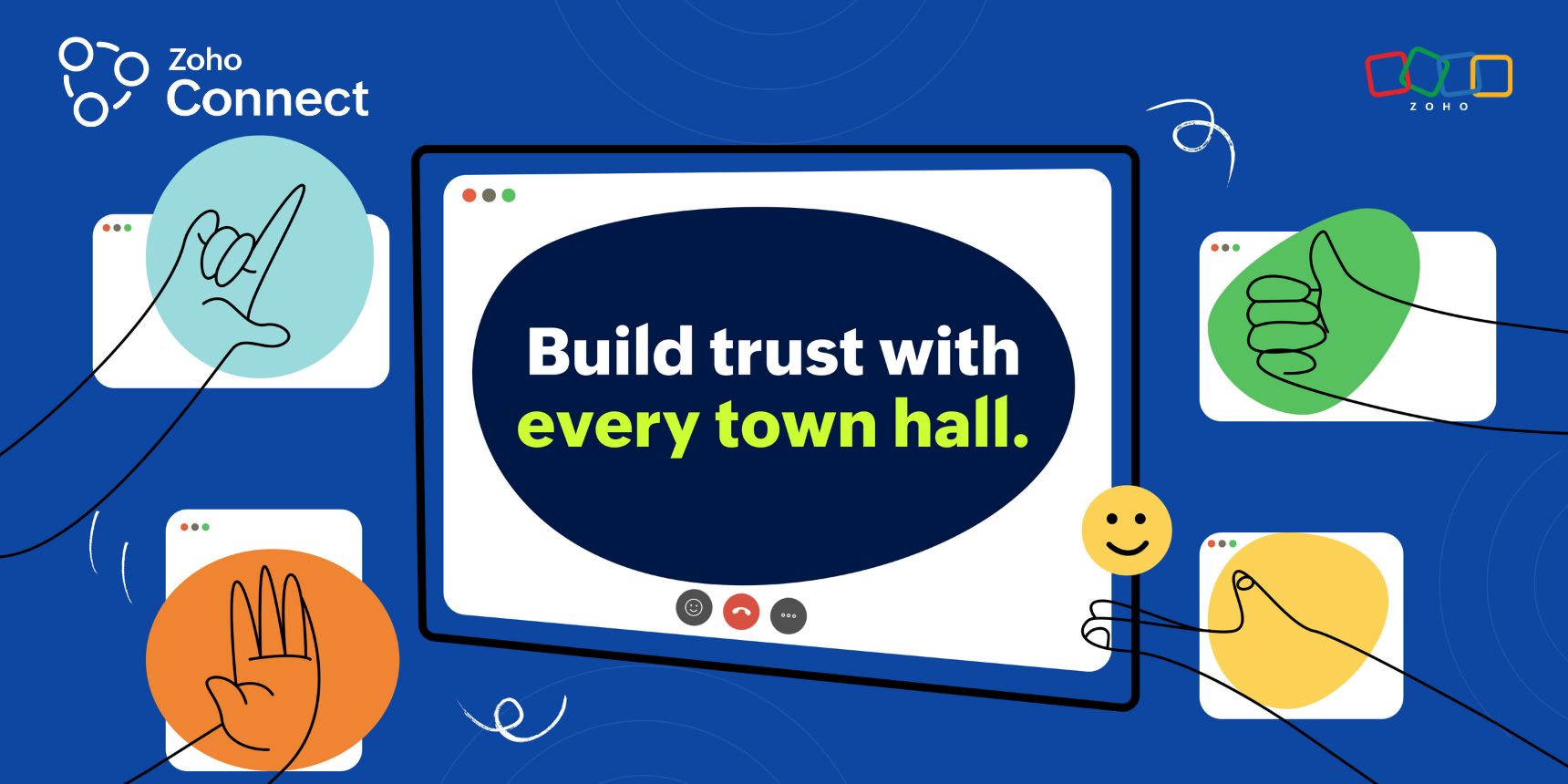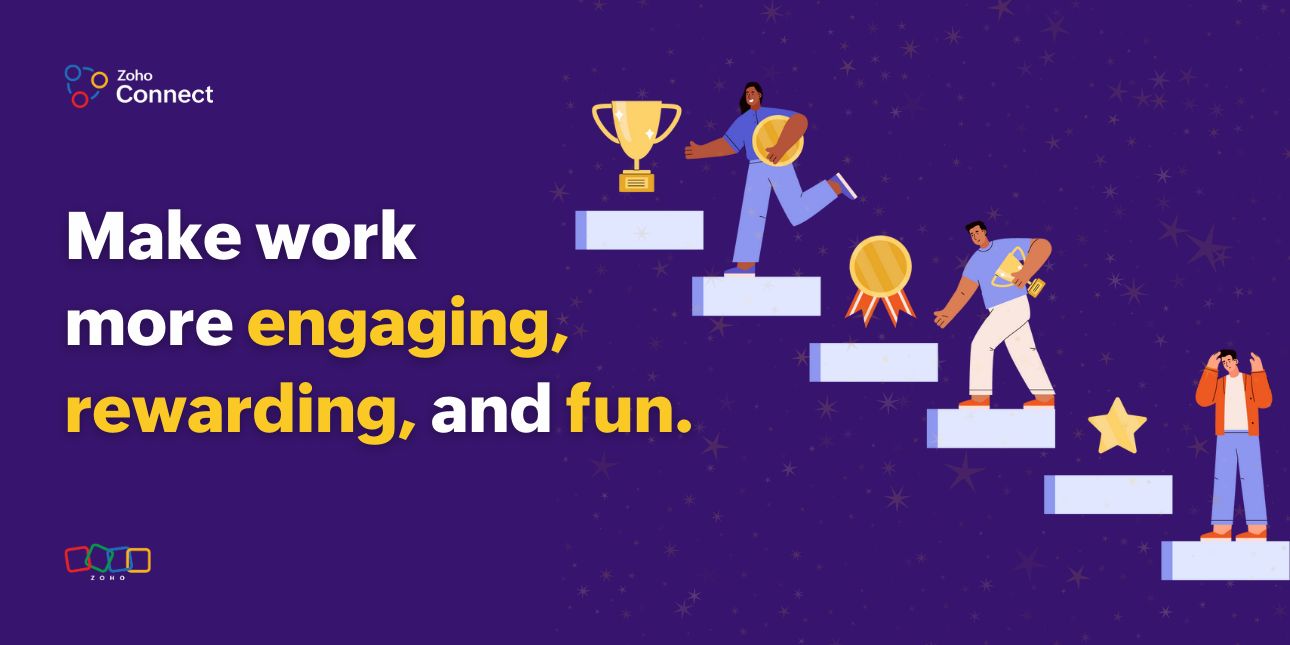- HOME
- More
- Employee Engagement
- Strategies to improve employee engagement
Strategies to improve employee engagement
- Last Updated : November 13, 2024
- 592 Views
- 8 Min Read

Keeping employees engaged is crucial for any company aiming to succeed. According to Gallup’s research, companies with highly engaged employees enjoy 21% higher profits and 17% more productivity. But engagement isn’t a simple, one-size-fits-all solution—what motivates one person may not resonate with another. To retain top talent and foster a productive culture, companies must understand what drives individuals. But first, let’s dive into what employee engagement really means and why it matters so much.
What is employee engagement?
Think of employee engagement as being the emotional commitment employees feel to their organization and its goals. It's much more than just job satisfaction; engaged employees are passionate, motivated, and invested in the company’s success. When employees feel engaged, they're more likely to bring their best selves to work, leading to increased productivity, improved quality of work, and stronger workplace relationships.
An engaged employee:
- Understands their role and how they contribute to the organization’s mission.
- Feels valued and appreciated for their unique skills and contributions.
- Has a positive relationship with their managers and colleagues.
- Feels motivated to exceed expectations and take on new challenges.
In contrast, a disengaged employee may feel indifferent about their job, do only the bare minimum, or even seek employment elsewhere. Prioritizing employee engagement is essential for any organization looking to retain their talent and maximize productivity.
Why is employee engagement important?
Employee engagement goes beyond boosting business performance—it’s about creating a workplace where people feel valued, respected, and empowered to do their best. When employees are engaged, they feel truly supported in their roles, which lets them work with purpose, integrity, and a sense of belonging. This respectful approach doesn’t just lead to a happier, more positive work culture—it’s also the right thing to do. When employees are treated well, they naturally bring their best ideas and energy to work, leading to more innovation, stronger customer relationships, and ultimately, a thriving organization.
Strategies to improve employee engagement
Creating an engaged workforce requires thoughtful planning and a commitment to understanding what employees need to thrive. Below are some effective strategies to foster employee engagement.
1. Promote open communication.
Open and honest communication is the foundation of a strong workplace culture. One study shows that 17% of employees believe there is open communication at all levels within their organization. Encourage managers to have regular check-ins with employees to understand their needs, listen to their concerns, and provide constructive feedback. By maintaining open channels of communication, employees feel heard and valued, which contributes to their overall engagement.
Tips to foster open communication:
- Schedule regular town halls or one-on-one meetings.
- Use surveys and feedback tools to gather input from employees.
- Foster a culture where everyone feels comfortable speaking up.
2. Provide growth and development opportunities.
People are more engaged when they have opportunities to learn and grow in their roles. According to the Randstad Workmonitor survey, 82% of employees say lifelong learning is important to them. Offering training programs, mentorship, and pathways to advancement shows employees that you're invested in their personal and professional development.
Ways to support growth and development:
- Create individualized development plans for employees.
- Allow employees to share their skills, creating an internal network of expertise and a supportive learning environment.
- Offer access to educational resources like online courses, books, or industry events.
3. Recognize and reward contributions.
Employees need to know that the company appreciates their hard work. Recognition doesn’t always have to come in the form of bonuses or raises—sometimes a simple “thank you” or public acknowledgment can make a huge difference. Create a culture of appreciation by celebrating wins, big and small. According to research published in the Harvard Business Review, when employees are frequently recognized for their efforts, they’re more likely to stay with the company and perform their best because they feel motivated and valued.
Ideas for employee recognition:
- Set up a digital or physical “kudos” board where employees can recognize one another for a job well done.
- Distribute virtual “tokens” employees can exchange for rewards, like a free coffee, a half day off, or a donation to their charity of choice.
- Feature employees in internal newsletters or employee experience platforms like Zoho Connect.
4. Empower employees with their own autonomy.
Trusting employees with the autonomy to make decisions within their roles fosters a sense of ownership and pride in their work. By giving employees the freedom to explore new ideas and solutions, they become more invested in their tasks and the company’s goals.
Ways to promote autonomy:
- Avoid micromanaging and encourage independent decision-making.
- Set clear goals and allow employees to find their own paths to achieving them.
- Create flexible working options, like remote work or flexible hours, to show trust in employees’ ability to manage their time.
5. Foster a sense of belonging and inclusion.
People are more engaged when they feel accepted and included. Cultivate a diverse and inclusive workplace where everyone feels welcome, respected, and valued for their unique perspectives and experiences. Study shows that diverse and inclusive organizations have a 19% higher likelihood of retaining employees and 57% better collaboration.
Strategies to create an inclusive workplace:
- Create a calendar of global holidays and cultural events, allowing employees to share traditions and customs with their colleagues.
- Equip leaders with tools to understand unconscious biases and promote inclusivity within their teams.
- Support groups or networks where employees with shared backgrounds or interests can connect, fostering support and camaraderie.
6. Support employees' work-life balance.
Burnout is a significant cause of disengagement, so it’s essential to support a healthy work-life balance. Encourage employees to take breaks, use their vacation time, and prioritize self-care. Flexibility in the workplace helps employees manage their personal and professional responsibilities without feeling overwhelmed. According to one study, 81% of hybrid employees report high engagement.
Tips to support work-life balance:
- Offer flexible work schedules and remote options.
- Respect boundaries around after-hours communication.
- Encourage employees to take time off to rest and recharge.
7. Engage employees in decision-making.
Involving employees in decision-making processes—especially those that impact their work directly—gives them a sense of ownership and commitment. When employees have a voice in shaping the organization’s future, they're more likely to feel connected and motivated. Research confirms that more than 80% of workers want a better understanding of how decisions are made.
Ways to engage employees in decision-making:
- Hold brainstorming sessions where all team members can share ideas.
- Use surveys or polls to gather input on key initiatives.
- Encourage feedback loops on new processes or changes within the company.
8. Encourage cross-department collaboration.
Bringing people from different departments together sparks fresh ideas and helps employees understand the bigger picture of the company’s mission. Collaborative projects foster new relationships, broaden perspectives, and increase a sense of unity across the organization.
Ways to promote collaboration:
- Host regular cross-department brainstorming sessions.
- Use EX platforms like Zoho Connect to allow team members to communicate easily and track progress.
- Organize company-wide “collab days” where people can work on projects outside their usual tasks.
9. Create a safe space for feedback.
Feedback is a two-way street. Employees need to feel safe to share their opinions, ideas, and even criticisms. Providing a space where they can give honest feedback empowers them to contribute to the company’s growth. One study found that 85% of employees take more initiative when they receive feedback about their work.
Tips to foster open feedback:
- Create anonymous feedback channels to ensure honesty.
- Conduct “no-judgment” feedback sessions where employees can voice concerns openly.
- Regularly follow up on feedback to show employees that their opinions are valued.
10. Celebrate cultural events and holidays.
Recognizing and celebrating various cultural events and holidays helps employees feel seen and appreciated for who they are. These celebrations not only boost morale but also build a more inclusive work environment.
Ideas for cultural celebrations:
- Host potluck lunches where employees bring dishes from their culture.
- Organize themed events or games around specific holidays.
- Acknowledge important holidays with a thoughtful message or small gesture, like a gift card.
11. Offer wellness programs and support.
Engagement starts with well-being. When employees feel physically and mentally healthy, they bring more energy and enthusiasm to work. Wellness programs show that companies care about their people’s health and happiness. Research shows that 89% of employees who work for companies with wellness programs are engaged and happy with their job.
Ideas for wellness programs:
- Provide access to meditation apps, fitness classes, or gym memberships.
- Schedule monthly wellness workshops covering topics like nutrition, mindfulness, or work-life balance.
- Offer mental health resources, such as counseling sessions or mental health days.
12. Personalize the work experience.
Each employee is unique, so offering personalized perks or resources can make them feel valued. Customizing the work experience shows employees that they’re more than just another face in the crowd.
Ways to personalize experiences:
- Offer options for workspace setups, like standing desks or ergonomic chairs.
- Allow for personalized learning paths to help employees achieve their career goals.
- Customize onboarding experiences to make new employees feel welcome starting on their first day.
13. Focus on purpose-driven work.
Employees are more engaged when they feel like their work has meaning. Aligning individual goals with the company’s mission helps them feel like part of something bigger and motivates them to contribute with purpose.
Ways to promote purpose-driven work:
- Regularly communicate how each role contributes to the company's mission.
- Share stories of how the organization makes a difference in customers’ lives.
- Encourage volunteer opportunities that align with the company’s values.
Making engagement a priority
Building an engaged workforce isn’t just about reaching goals—it’s about creating a workplace where employees feel valued, heard, and connected to a shared purpose. Real engagement comes from listening to employees, acting on their feedback, and fostering a culture of growth and collaboration. While there’s no instant path to perfect engagement, every step brings results: Employees find a workplace they love, and organizations gain motivated, committed employees.
Employee experience platforms like Zoho Connect can streamline these engagement efforts, making it easier for employees to stay connected and feel part of something bigger. Zoho Connect fosters open communication, collects feedback, recognizes achievements, and builds a strong sense of belonging. By implementing these strategies with the support of Zoho Connect, you’re not just aiming for high engagement—you’re creating a workplace people are excited to be part of. This approach builds lasting value, where employees feel connected, and the organization thrives as a result.
You can take the first step towards creating a more engaged workplace today. Explore how Zoho Connect can help you inspire and add value to your employees and your organization.


